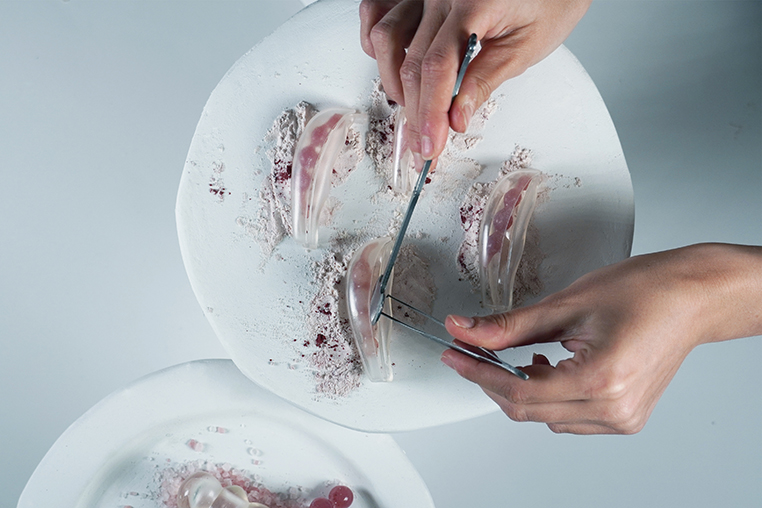This story is part of Next Generation, a series in which we give young makers a platform to showcase their work. Your work here? Get in touch and plot your coordinates as we navigate our future together.
What if we could regenerate extinct flavor families using microalgae? Thats exactly the focus of textile designer Malu Luecking, who recently graduated from College Central Saint Martins MA in Biodesign. Malu has a strong focus on speculative design futures and Biomaterial research. Driven by her fascination for the underwater world, Malu’s work has been focused on algae for the last years. In her work she explores the potential of both, microalgae and macroalgae as a regenerative aquaculture for today’s material world and and the future of food.

We are in the year 2050. Agriculture, as we used to know it, barely exists anymore. Former biodiversity has deteriorated with human consumerism and the impacts of climate change. Further crises arose after overfishing depleted fish stocks, and the extinction of bees caused the disappearance of many flowering plants and herbs. Our spectrum of natural flavors has been significantly reduced. This loss of agro-biodiversity not only endangers human health, but also the spirituality and cultural importance of culinary traditions.
Landless Food presents six food objects as reincarnations of three types of lost flavors.

The project, Landless Food, proposes a regeneration of humanity’s food system by introducing a new family of timely flavors that bring our culinary memories back on the table. These are based on microalgae, which have come into focus of research for the variety of tastes that can be further diversified and refined through manipulation of their metabolism. The first outcomes are a line of seafood flavors and a floral spice.

For this, local strains of microalgae have been cultivated on edible gel-like objects. After a period of two weeks the algae can be harvested and consumed freshly. Landless Food presents six food objects as reincarnations of three types of lost flavors. While the shapes of the food remain partly unfamiliar, the tools that are designed to eat these objects relate back to the long extinct resources of the taste.

Share your thoughts and join the technology debate!
Be the first to comment